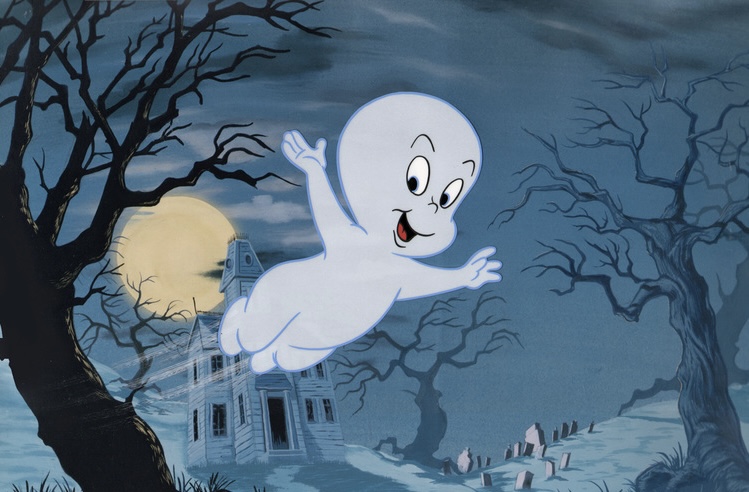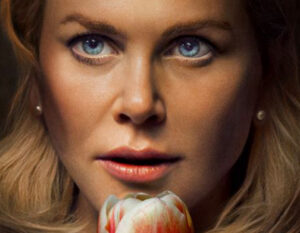
With his cherubic face and playful demeanor, Casper the Friendly Ghost has been a beloved figure in pop culture for over seven decades. As Halloween draws near each October, Casper often makes a nostalgic comeback, proving that the charm of this “friendly ghost” transcends generations. But how did Casper come to be, and why does he continue to capture the imagination of children and adults alike, year after year?
The story of Casper began in the late 1930s when cartoonist Seymour Reit and illustrator Joe Oriolo created the character. Initially conceptualized as a children’s book, Casper’s journey to fame would be a winding one, eventually making its way to the big and small screens, delighting audiences in both animated series and feature films. As we approach another Halloween season, let’s dive into the origins of Casper the Friendly Ghost, explore his creators’ contributions, and understand how this classic character has managed to remain a Halloween icon even in the age of digital animation.
Casper’s Beginnings: A Product of the Golden Age of Animation
Casper’s inception can be traced back to 1939, when Seymour Reit, a writer and illustrator for various magazines, collaborated with his friend Joe Oriolo to create a story about a ghost who wanted to make friends rather than frighten people. Oriolo, who would later become known for his work on the “Felix the Cat” cartoons, illustrated the original concept. However, due to World War II and Reit’s enlistment, the project was temporarily shelved.
In 1945, Paramount Pictures’ animation division, Famous Studios, acquired the rights to the character, turning Casper into a theatrical short subject. Under the direction of Isadore “Izzy” Sparber and the creative guidance of Oriolo, the first animated short, “The Friendly Ghost”, was released, and Casper’s sweet-natured personality quickly distinguished him from other ghostly figures in folklore. Unlike traditional depictions of ghosts as malevolent or mischievous spirits, Casper was a kind and endearing character who sought companionship and adventure.
This fresh take on the ghost trope resonated with audiences, especially children, leading to a series of animated shorts throughout the 1940s and 1950s. Casper’s animation success laid the foundation for his continued presence in comic books, television series, and eventually, a live-action film in 1995.
Joe Oriolo’s Influence and Legacy
Joe Oriolo, who co-created Casper with Reit, played a crucial role in developing the character’s animated presence. Although Oriolo sold his rights to Casper to Famous Studios, he remained involved in the character’s creative evolution. Oriolo’s distinctive animation style and knack for creating lovable, relatable characters were instrumental in Casper’s initial appeal.
Oriolo’s artistic influence can be seen in Casper’s soft features and expressive eyes, which convey innocence and friendliness—traits that define the character to this day. After his work on Casper, Oriolo would go on to make significant contributions to the animation industry, including revamping “Felix the Cat” for television in the 1950s. His legacy, however, is forever linked to the ghostly character he helped bring to life.
The Evolution of Casper: From Comics to the Silver Screen
Casper’s popularity continued to grow, and by the mid-1950s, the character had expanded beyond animated shorts to comic books. Published by Harvey Comics, these stories delved deeper into Casper’s world, introducing new characters such as Wendy the Good Little Witch and Hot Stuff the Little Devil. These comics solidified Casper’s place as a prominent figure in children’s literature, where he remained a staple for decades.
The 1995 feature film, simply titled Casper, marked a turning point for the character, bringing him into the realm of live-action with cutting-edge CGI animation. Directed by Brad Silberling and produced by Steven Spielberg’s Amblin Entertainment, the film was a critical and commercial success, introducing a new generation to the Friendly Ghost. The film’s darker, more emotional tone, combined with its groundbreaking visual effects, showcased Casper’s versatility as a character capable of resonating with audiences of all ages.
Resurfacing for the Halloween Season: The Appeal of Nostalgia
In recent years, there has been a renewed interest in classic animated characters like Casper, especially around the Halloween season. This resurgence can be attributed to several factors. First, the rise of digital streaming platforms has made older shows and films more accessible, allowing younger audiences to discover characters their parents grew up with. Additionally, social media platforms like Instagram and TikTok have facilitated a broader cultural conversation around nostalgia, encouraging people to revisit childhood favorites and share their experiences with others.
Casper’s inherent gentleness and charm make him an ideal figure for those looking to indulge in Halloween festivities without embracing the horror or macabre aspects typically associated with the holiday. His friendly, non-threatening demeanor allows him to occupy a unique niche in the Halloween pantheon, making him equally beloved by children and adults seeking a softer, more whimsical form of Halloween entertainment.
The Timelessness of Casper’s Themes
Part of Casper’s lasting appeal lies in the universality of his story. At its core, Casper’s quest for friendship and acceptance is a theme that resonates deeply with people of all ages. Despite being a ghost, he faces very human challenges: loneliness, rejection, and the desire to be understood. His status as an outsider who ultimately finds belonging speaks to anyone who has ever felt different or marginalized.
Moreover, Casper’s story can be interpreted as a metaphor for overcoming fear and prejudice. Those he encounters initially fear him simply because he’s a ghost, but they come to realize that he’s harmless and kind-hearted. This dynamic serves as a reminder that fear is often rooted in misunderstanding and that empathy can bridge even the widest of divides.
Casper’s Role in Contemporary Halloween Celebrations
As Halloween decorations flood stores and themed parties take over social calendars, it’s no surprise that Casper once again finds himself at the center of attention. From vintage-inspired Casper merchandise to special screenings of his classic films and shows, his presence during the season taps into a collective yearning for simpler, more innocent forms of entertainment.
For animators and artists today, Casper’s resurgence is a source of inspiration. His enduring popularity suggests that there’s room in the market for characters that offer more than just visual spectacle. In a world where animated content often leans toward hyper-realism or ironic detachment, Casper’s sincere quest for friendship feels refreshingly authentic.
The Future of Casper: New Interpretations and Lasting Impression
As we look toward the future, it’s worth considering how Casper might continue to evolve. There have been discussions about rebooting the character for a new generation, perhaps through a fresh animated series or even another live-action film. Whatever form he takes, it’s clear that any successful reimagining of Casper will need to preserve the essence of what made him so beloved in the first place: his earnestness, his kindness, and his ability to transcend fear with empathy.
In a world that often feels divided and chaotic, the message embodied by a friendly ghost from the 1940s is more relevant than ever. Casper’s ability to navigate both the human and ghostly realms without losing his sense of self is a powerful metaphor for resilience and adaptability. As he continues to resurface each Halloween, Casper serves as a gentle reminder that even in the spookiest of seasons, there’s room for friendship and understanding.
Casper’s Place in Pop Culture and Our Hearts
Casper the Friendly Ghost may have started as a simple children’s book concept, but over the decades, he has grown into an enduring symbol of innocence and hope. Thanks to the creative vision of Seymour Reit and Joe Oriolo, Casper has left an indelible mark on animation history, influencing countless artists and creators.
As he continues to reappear each Halloween, Casper’s popularity shows no signs of fading. He remains a beloved figure who brings joy and comfort to fans both young and old. Whether through classic reruns, new merchandise, or potential reboots, Casper will always have a place in the pop culture landscape and in our hearts—proving that even a ghost can be a timeless icon.
No comments yet.








